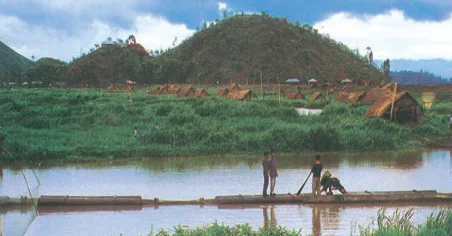![]() 20 Jun 2024
20 Jun 2024
Indian Lakes whether natural or artificial bodies of water that are surrounded by land. India boasts a diverse array of lakes, each distinct in terms of size and characteristics.
|
Do You Know? 71 percent of the world’s surface is covered with water, but 97 per cent of that is salt water. Of the 3 percent that is available as freshwater, three quarters of it is trapped as ice. |
|---|
Indian Lakes: Origins and Formation Diversity

Loktak Lake
|
POINTS TO PONDER River and Water bodies are the lifelines of a Nation. In this context, there have been issues over water sharing between countries for the trans-national rivers. Find out some of these trans-national water bodies across the world. Do you think the country possessing the origin of rivers has a natural advantage or extra rights over it? Find out the principles established for the division of water resources amongst countries for such rivers. |
|---|
Pollution Challenges in Indian Lakes and Rivers
The growing domestic, municipal, industrial and agricultural demand for water from rivers naturally affects the quality of water.
|
National River Conservation Plan (NRCP)
|
|---|
Conclusion
|
Glossary
|
|---|
| Must Read | |
| Current Affairs | Editorial Analysis |
| Upsc Notes | Upsc Blogs |
| NCERT Notes | Free Main Answer Writing |
<div class="new-fform">
</div>